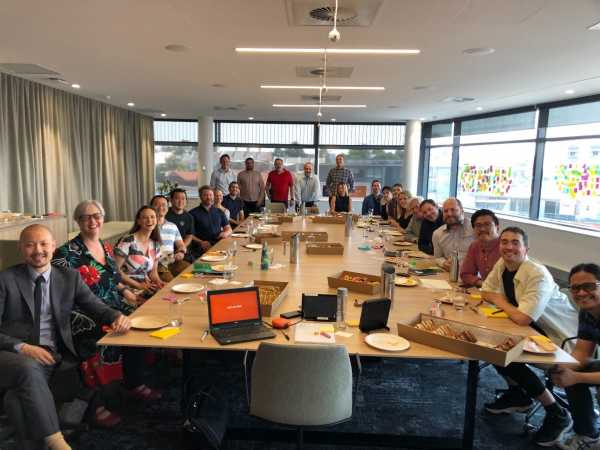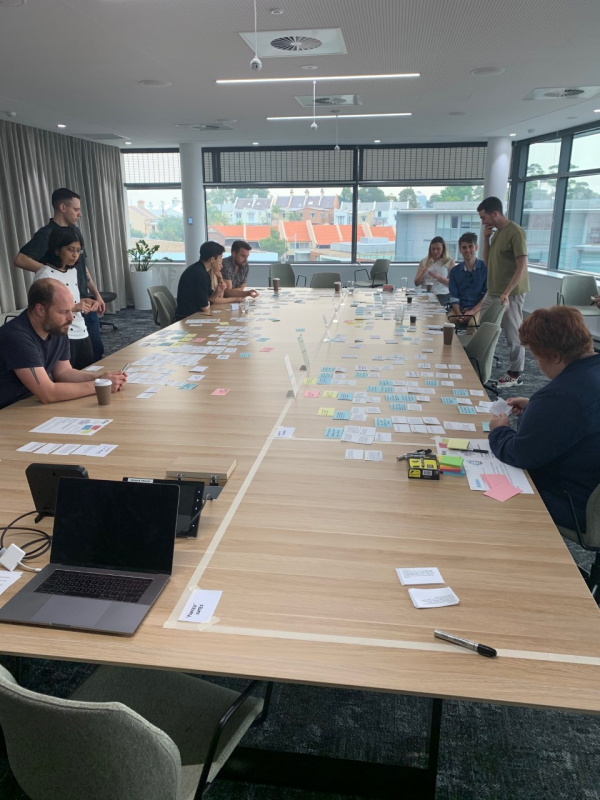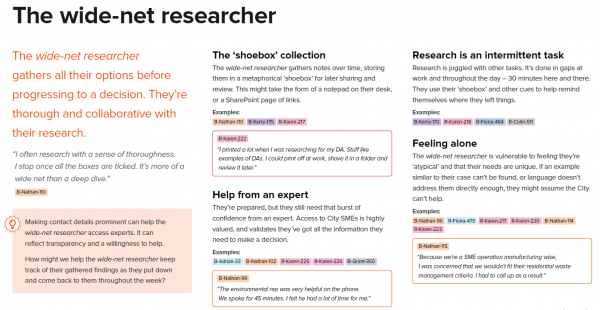







Project Overview
Cities are complex. Global cities like Sydney are a melting pot of cultures. With more than half of its residents born overseas - and an enormous daily influx of workers, visitors and businesses each day - the needs of the City's community are incredibly diverse and constantly evolving.
Building a great digital experience for City communities needs to address that complexity head on.
Organisation
Team
Tom Gao
Karl Herger
Bernard De Broglio
Joseph Gullotta
Stuart Wong
Sutanto Samboen
Safa Fatayerji
Janine Poon
Johan Borg, Sally McGovern, Harry Court and the ISOBAR team
Project Brief
No one expects much from government websites. They are often designed with a low focus on engagement and built to reflect internal organisational and system structure rather than customer need and behaviour. When we spoke to our community about digital experience, they asked for three things - a simple, all-in-one-place experience, greater awareness of what the City could offer, and finally, how the multitude of services and initiatives the City delivered all worked together toward a single vision.
To deliver on that, the single largest obstacle we faced in delivering a new website was the sheer volume, complexity and diversity of the content that reflected what the City did for its community. How could we make something really complex ... simple?
Project Need
Making government information simple is a well known problem. Many government websites deal with the problem by adopting a familiar approach - using a highly structured but unwieldy navigational and information architecture that tends to reflect internal government complexity - which might be useful if you work in the organisation but not so great otherwise. Other times a great interface might be created but that won't address the underlying content complexity. Visual components come and go but to really start making complex content simple to find and understand, we needed to rethink our content and the way our community look for and articulate their needs from the ground up.
User Experience
To simplify access to complex government information, we needed to approach things differently. Face to face user research uncovered a new way of thinking about user behaviour with the standard types of customer personas (such as residents, visitors, businesses and workers) being replaced with identities focused around information seeking behaviour. There were "cloudy researchers" and "pragmatic doers" to name a few. Any person could be a mix of these types depending on the situation. Crucially, each of these types approached information finding with a specific mental model of the City. We supported this research by taking a different focus in dealing with experience design. User journey design is essential but we also spent a lot of effort focused on uncovering underlying relationships between council concepts through complex domain modelling. We ended up with a enormous map of council concepts and, importantly, their connections to each other. Mapping our information seeking types against this domain uncovered news routes to getting data.
Our entire site architecture and design changed drastically as a result and meant a significant departure from traditional government design approaches. Instead we focused on building a framework that meant we could building connections between content that reflected how our community actually find information enabling users to more naturally and intuitively engage with us.
Project Marketing
Our recently completed corporate website had a number of aims. First, research told us our community wanted a single, seamless experience, online and in one place. The redevelopment aims to set a foundation for consolidating the City's broader digital portfolio so the technology and UX design was built to be scalable. Second, our research also found our community wanted to understand not only what the City was delivering - but how various City initiatives contributed to a bigger vision for everyone. So we developed new forms of content and components that spoke to a bigger picture. Third, our community asked for an experience that valued their time. So to help users get to outcomes quicker we completely overhauled our website information strategy and architecture matching the patterns and mental models we discovered our users actually employ to interact with our content. These strategies have been reflected positively in our post go-live project measures:
a) up to 50% increase in access to digital services measured by clicks.
b) 25% reduction in time spent per user website session
c) 20% reduction in pages visited per website session
d) 12% improvement in search visibility on launch
Digital - Government Services
The provision of timely government services has been transformed as applications and sites are developed and implemented to either replace or complement previous methods. Be it the delivery of current and up to date critical information, compliance, community support and engagement, notification and registration or providing greater accessibility to government resources.
More Details

